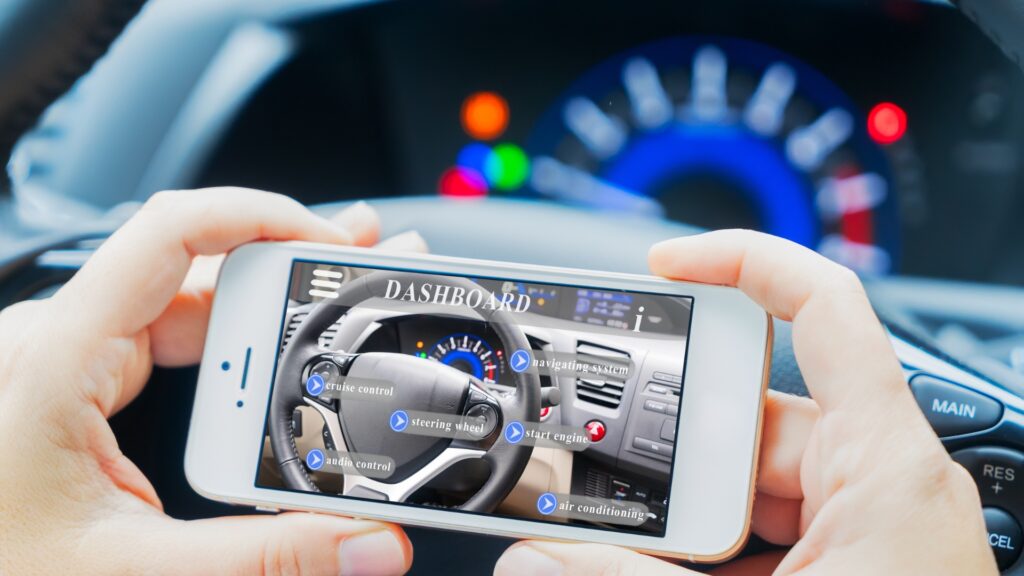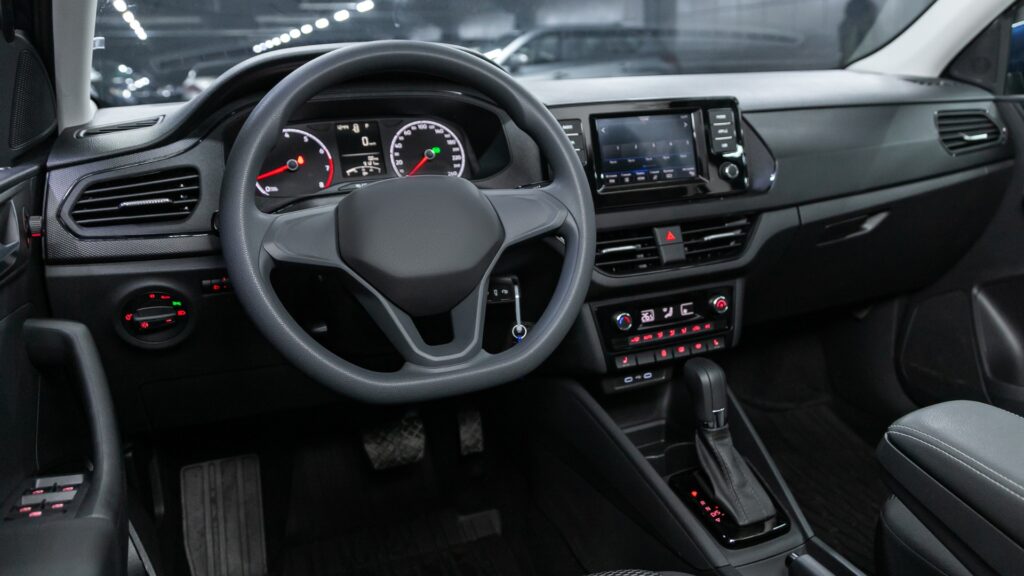As a tech enthusiast, I’ve always been fascinated by the innovative ways in which technology is revolutionizing our daily lives. One such groundbreaking advancement is the integration of augmented reality in car displays. Imagine driving down the road with real-time navigation cues seamlessly overlaying the windshield, or safety alerts appearing right in your line of sight. Augmented reality is not just a concept of the future; it’s quickly becoming a reality in the automotive industry.
In this article, I’ll delve into the exciting world of augmented reality in car displays, exploring how this technology is enhancing the driving experience, improving safety, and opening up a new realm of possibilities for drivers. From heads-up displays to interactive windshield projections, the potential applications of augmented reality in vehicles are endless. Join me as we uncover the transformative impact of AR technology on the road ahead.
Evolution of Car Displays
Innovations in car displays have come a long way, adapting to meet the changing needs of drivers and enhance the overall driving experience. Touchscreens, once considered cutting-edge, have now become commonplace in modern vehicles, offering intuitive controls and access to a myriad of functionalities at the driver’s fingertips.
The evolution of car displays has seen a shift towards more interactive and informative systems. Initially focused on providing basic information such as speed and fuel levels, car displays now integrate advanced features like augmented reality (AR) to offer drivers real-time data and assistance while on the road.
With the introduction of AR technology, car displays have taken a significant leap forward, providing drivers with enhanced navigation tools, safety alerts, and immersive experiences. By overlaying digital information onto the real world, AR displays can guide drivers with turn-by-turn directions, highlight points of interest, and even warn of potential hazards ahead, all without diverting their attention from the road.
This evolution in car displays not only enhances the driving experience but also sets the stage for further advancements in vehicle technology. As AR continues to integrate seamlessly into automotive interfaces, we can expect a future where information is presented in more engaging and intuitive ways, ultimately transforming how we interact with our vehicles.
Augmented Reality Technology in Cars
When it comes to augmented reality technology in cars, it’s fascinating to see how it’s reshaping the driving experience. From providing real-time navigation cues to enhancing safety alerts directly in the driver’s line of sight, AR is playing a crucial role in revolutionizing how we interact with our vehicles.
Integration of Augmented Reality
Integrating augmented reality into car displays offers a seamless way to blend digital information with the real world. By overlaying navigation instructions and relevant alerts onto the driver’s view, AR enhances situational awareness, making driving safer and more intuitive. This integration helps drivers stay focused on the road while receiving crucial information in a non-intrusive manner.
Benefits of AR in Car Displays
The benefits of augmented reality in car displays are vast and impactful. One key advantage is the ability to superimpose navigation directions directly onto the road ahead, providing clear and easy-to-follow guidance. AR also facilitates heads-up displays that project vital information like speed, lane guidance, and warnings, minimizing the need for drivers to look away from the road. Additionally, by integrating AR technology, cars can offer enhanced safety features such as real-time hazard alerts and adaptive cruise control information, further enhancing the overall driving experience.
Challenges and Limitations
Navigating the integration of augmented reality (AR) in car displays comes with its own set of challenges and limitations. While the technology holds immense promise in enhancing the driving experience, there are certain obstacles that need to be addressed for seamless implementation.
- Technological Constraints: Integrating AR into car displays requires advanced hardware and software capabilities. Ensuring compatibility with existing systems and overcoming technical limitations can be a significant hurdle in widespread adoption.
- User Distractions: While AR aims to provide real-time information without diverting attention from the road, there’s a fine line between aiding drivers and potentially causing distractions. Balancing informative displays with driving focus is crucial for safety.
- Visibility Issues: AR projections need to be clear and visible in various lighting conditions to be effective. Ensuring optimal visibility during daytime, nighttime, and adverse weather scenarios presents a challenge that must be addressed.
- Data Accuracy: The accuracy and real-time updates of AR information, such as navigation cues and safety alerts, are critical for driver assistance. Maintaining data precision and reliability poses a challenge in dynamic driving environments.
- Cost Implications: Implementing AR technology in car displays can significantly increase production costs, which may impact the affordability of vehicles. Balancing the added value of AR features with cost considerations is essential for market acceptance.
Navigating these challenges and addressing the limitations associated with augmented reality in car displays is crucial for unlocking the full potential of this innovative technology in enhancing the driving experience.
Future Trends in Augmented Reality Car Displays
Exploring the future trends of augmented reality (AR) in car displays unveils exciting advancements that are poised to redefine the driving experience. Embracing AR technology in vehicles opens up a realm of possibilities that enhance safety, navigation, and overall driver interaction with their vehicles.
- Integration with Smart Infrastructure
In the upcoming years, AR car displays are likely to integrate seamlessly with smart city infrastructure. This means that vehicles equipped with AR capabilities can interact with traffic lights, road signs, and other elements of the urban environment to offer real-time data and guidance to drivers. Imagine receiving alerts about upcoming road conditions or speed limit changes directly on your windshield, transforming how drivers perceive and respond to their surroundings.
- Personalized Driving Experiences
Future AR car displays are set to offer highly personalized driving experiences tailored to individual preferences and needs. From customized navigation routes based on your driving habits to augmented reality overlays that cater to your specific driving style, the technology will adapt to enhance each driver’s journey. This level of personalization ensures that every driver receives relevant and timely information that enriches their time on the road.
- Enhanced Safety Features
As AR technology advances, so do the safety features integrated into car displays. Future trends suggest that AR will not only provide real-time hazard alerts but also enhance driver awareness by highlighting potential dangers in their vicinity. Whether it’s alerting drivers to pedestrians in blind spots or warning of sudden lane changes, AR safety features aim to reduce accidents and prioritize road safety for all motorists.
- Augmented Reality Advertising
One emerging trend in AR car displays is the potential for augmented reality advertising. Through AR overlays on windshields or side windows, drivers may receive targeted advertisements from nearby businesses or relevant promotions based on their route. While this trend raises questions about distraction and privacy, it showcases how AR can transform mundane drives into engaging, interactive experiences that cater to both drivers and advertisers.
- Integration with Autonomous Driving Systems
Looking ahead, the integration of AR with autonomous driving systems is a promising trend in car displays. As self-driving technologies evolve, AR overlays can offer passengers informative visuals about the vehicle’s surroundings, route, and potential stops. This symbiotic relationship between AR displays and autonomous systems aims to create a seamless transition towards a future where vehicles are not just modes of transportation but immersive digital environments.
By anticipating these future trends in augmented reality car displays, manufacturers and tech developers can unlock the full potential of AR technology in revolutionizing the driving experience. From personalized interactions to enhanced safety features, the integration of AR holds the key to shaping a futuristic and intuitive driving landscape that prioritizes innovation and driver well-being.




